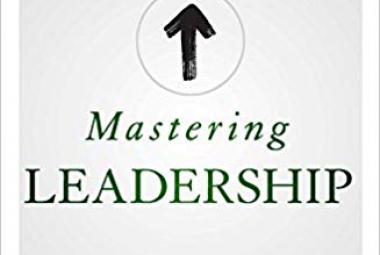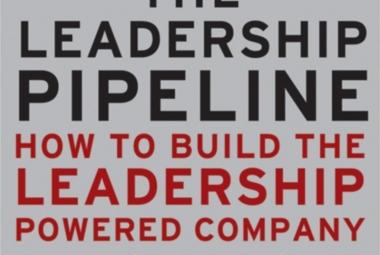In his book, the five levels of Leadership, John Maxwell describes 5 levels of leadership maturity. From leadership based on position (level 1) to being a leader by developing other leaders (level 5), Maxwell explains why every organization needs more level 5 leaders and how every individual can get there. Of course, this fantastic book is accompanied by lots of one liners, and insights from Maxwell’s personal experience.
For each leadership level, the book describes how to recognize this type of leader and what you can do to grow to the next level of leadership. Interesting to note beforehand is, that the levels on which you act can differ per person you work with. You can be a level 3 leaders with one colleague, and a level 4 with another.
The first level of leadership describes LEADERSHIP BASED ON POSITION. Leaders who act as this level need their title to get things done and spend most of their time protecting their turf by playing political games. This type of leadership is the only one in which the leaders do not have any actual influence on their team members and should therefore not even be allowed to be called leadership.
The one-liner “it is lonely at the top” can according to Maxwell only be created by a level 1 leader, because people rather avoid working with them or even change their job rather than working with them. People who are working for a level 1 leader are usually not motivated to put in that little extra effort at work. They are simply not engaged. Surveys in 2006 show, that in the USA, 15% of people did not feel engaged with their manager or organization. In Germany, this was 50%!
The good news is, that you as a leader can grow out of level 1. Getting a title means the organization believes in you and that you have a chance to grow up to be a true leader. Getting your title is an invitation for personal growth and your first challenge will be to grow to a level 2 leader.
Level 2 leadership is about LEADERSHIP BASED ON PERMISSION. On this level, you find leaders that have learned that relationships are important to be able to get that little extra effort form your team members. People believe in the leader as a person, and because of that they follow your vision. The best is, that you don’t even need a title to be(come) a level 2 leader.
Good personal relationships within the organization create energy, trust, and it doesn’t hurt that people like you.
The easiest step to grow into this level of leadership is to show interest in your colleagues on a personal level. Every person is not only an employee at the firm, they also have a home, a family, their health struggles and personal traits.
Another tip Maxwell describes is to compliment your colleagues for their personal strengths. Get to know your colleagues in such a way, that you know what their strengths are so you can positively reinforce them whenever you see them using them.
The downside of level 2, is that having a great place to work not necessarily means you can lead to achieve results. This is why every leaders should grow to level 3.
The third level of leadership is LEADERSHIP BASED ON RESULTS. On this level, the leader achieves measurable results. An important reason why this is level 3 and not level 2, is because people cannot achieve positive results in the long run, when their personal needs are not taken care of. The people who achieve results, but are not looked after on personal level, are the ones who get burned-out.
Level 3 leaders are the ones who use their relationships (and therefore influence) to realize their vision. It is important that you as a leader define your vision and can explain why it is important for the organization.
To be able to achieve results, the leader has to be able to set priorities and help team members select the most important tasks. To help people grow, the kind of tasks that time should be spend on according to Maxwell is as follows:
- 80% of the time on tasks within your strengths zone
- 15% of your time on tasks within your learning zone
- 5% on work outside your strengths zone
- And 0% within your weakness zone
The level 3 leader is loved within the team and leads the team to measureable results. The downside of this level is however, that the results diminish after the leader leaves the team because they are dependent on the leader for achieving these results. Fortunately, every level 3 leader can grow into a level 4 leader, who’s task it is to develop his team members to be able to achieve results on their own.
The fourth level of leadership is called LEADERSHIP BASED ON PEOPLE DEVELOPMENT. If you want a fun place to work, grow to level 2. If you would like to perform as an organization, grow to level 3. If you want to grow as an organization, make sure you have a lot of level 4 leaders.
Developing others means that you as a leader should always work on delegating your tasks to others.
Maxwell suggest to delegate your task when somebody else can do the same task in 80% or more of your efficiency.
A level 4 leader should spend about 80% of his time coaching colleagues, and 20% with productive work. This is a very difficult step for level 3 leaders who are used to achieving most of the results themselves.
It is however impossible to coach everybody in becoming the next generation of leaders. Level 4 leaders therefore focus on developing people with the highest potential, usually the top 20% of the population.
The biggest challenge of the level 4 leader is to put other people´s personal growth before your own.
The fifth and final level of leadership is called LEADERSHIP BASED ON RESPECT. These are the leaders who are still mentioned long after they have left the organization. They are the ones who left a legacy. These are actually also the leaders who have spent their time creating leaders that create more leaders.
The most important long term goal for an organization is to continuously work on building the next generation of leaders who can succeed the current generation, which means, a level 5 leader should built more level 4 leaders.
The five levels of leadership describe a path of personal growth every leader experiences, from learning how to improve your personal relationships with your team members so that they believe in your vision, up to coaching more people to the level in which they also coach more people. This leadership pipeline is the only sustainable way to grow an organization in the long term.
This book is by far my favorite leadership book, which helps you reflect about how you act within your role and with different colleagues, and what you should focus on to improve your own leadership skills.
Continue to:
Bringing out the Best in People - A.Daniels (summary)
REFERENCE:
Maxwell, J.C., 2011, The Five Levels of Leadership – Proven steps to Maximize your Potential, New York: Centre Street (order this book)















